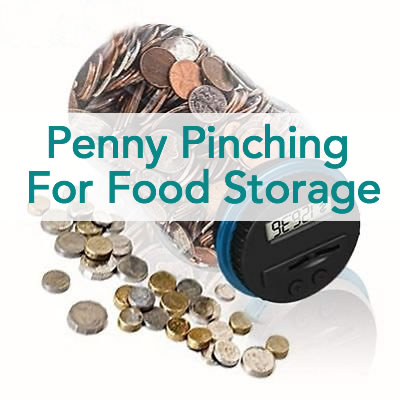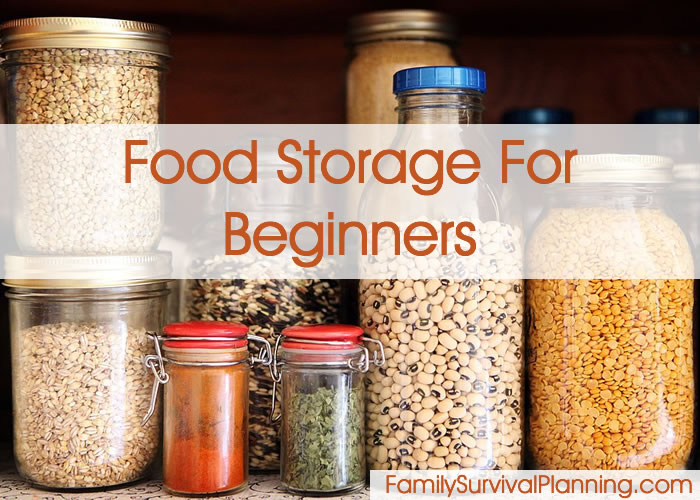
- HOME
- Financial Survival
- Grocery Budget
Step-by-Step Plan to Fill Your Pantry Using Only Your Grocery Budget
Take control of your grocery budget and meet your goal of a fully stocked preparedness pantry.

Saving money by controlling your grocery budget begins as your next payday approaches.
You may think your grocery budget can't possibly be stretched even one more inch to incorporate stocking up into it. I can tell you that it can! Really!
Just follow this step-by-step program and you will find your pantry full, your budget controlled, and money saved, no matter how small your pay check might be.
Invest in emergency food storage now and enjoy peace of mind for the next 25 years. Don't miss out on the savings!
Step-by-Step Plan to Fill Your Pantry
1. Inventory Your Cupboards
Take an inventory of what you have on hand.
On a piece of paper, write general headings such as:
- canned goods,
- meats,
- frozen foods,
- and dairy products.
Jot down the names of items and how many of each you have on the shelves.
2. Plan Menus from Foods on Hand
Pretend that there is no way for you to get to the store until payday. What meals could you make from what you have on hand? (Don't forget breakfasts and lunches.)
Most people are surprised to discover that, even in a rather empty-looking kitchen, they can usually gather up supplies for several meals.
Try to create enough simple meals to last until the following payday, even if you have to eat the same thing several times.
3. Assess Your Basic Needs
You'll find there are some meals you could make if you only had this or that item. Begin a "needs" list and add these things to it. Also list other must-have items; the things you cannot do without until next payday, like milk, formula, bread, etc. Be sure to include as needs only those items necessary to nutritiously feed your family.
Don't forget nonfood items. Don't include wants (those things you would like to have but can live without). Be tough on yourself in determining what is a need and what is a want.
When your list of needs is complete, estimate the cost of each item and add the prices together for an estimated total.
First Payday Plan
Take a Look at Your Paycheck
With your preparation completed, it's time to decide how much your grocery budget is.
If you don't have a set amount already, subtract all of your bills and other obligations that have to come out of this paycheck, like rent/mortgage, utilities, insurance, bus fare, car payments, etc. Also, deduct the out-of-the-ordinary but necessary expenses for this pay period, like upcoming birthdays, school pictures, haircuts, etc.
When all these fixed expenses are subtracted, what remains is your grocery budget.
(Don't cry — just keep reading.)

Now subtract from your grocery budget the estimated total of your grocery needs (from your assessment chart, remember?). The remaining figure is called your "workable amount." It is the amount of money you can spend on groceries other than absolute needs. Don't be discouraged if this amount is small. Even a few dollars of workable money will get you started.
If your finances are so tight that creating a workable amount each payday seems impossible, consider this option: Set aside an amount, however small, from each paycheck as if it were another bill. Use this pre-selected amount as your workable amount. If this amount is too small to even buy anything, save it up until the amount is larger. You might even consider using leftover pennies, nickels and dimes saved up in a jar to begin your "workable amount".
Second Payday Plan
(Rinse and) Repeat
For the next paycheck (and all paychecks from this point forward), determine your workable amount by following the formula you used on the first payday.
If you are scrupulous in preparing your needs list and creative enough in menu planning to provide many of your means from your cupboards for another week, you may notice an increase in your workable amount, even if only a small one. But don't be discouraged if it's nothing or really small; sometimes it takes several pay periods before you see progress.
Keep The Plan Going
This plan should be repeated until most of your grocery money is being allocated for specials, sales, and bulk buys. Of course, you may choose to go to the store more frequently to stay stocked up on fresh produce, dairy products, and other perishables, but even fresh-food shopping follows the rules:
- Buy only when the price is right which may mean "in season";
- Stock up as much as possible, using a specific list of items and dollar amounts.
Eventually your pantry should contain a variety of foods (including perishables, fresh or frozen) in sufficient amounts that you could serve several weeks of well-balanced meals without going to the store. The same goes for nonfood items as well.
As you work with your new meal planning and shopping skills each pay period, you will gain more and more confidence in your abilities. The fuller your pantry grows, the more in control and at peace you will feel.

















